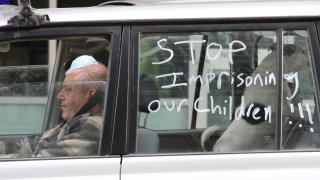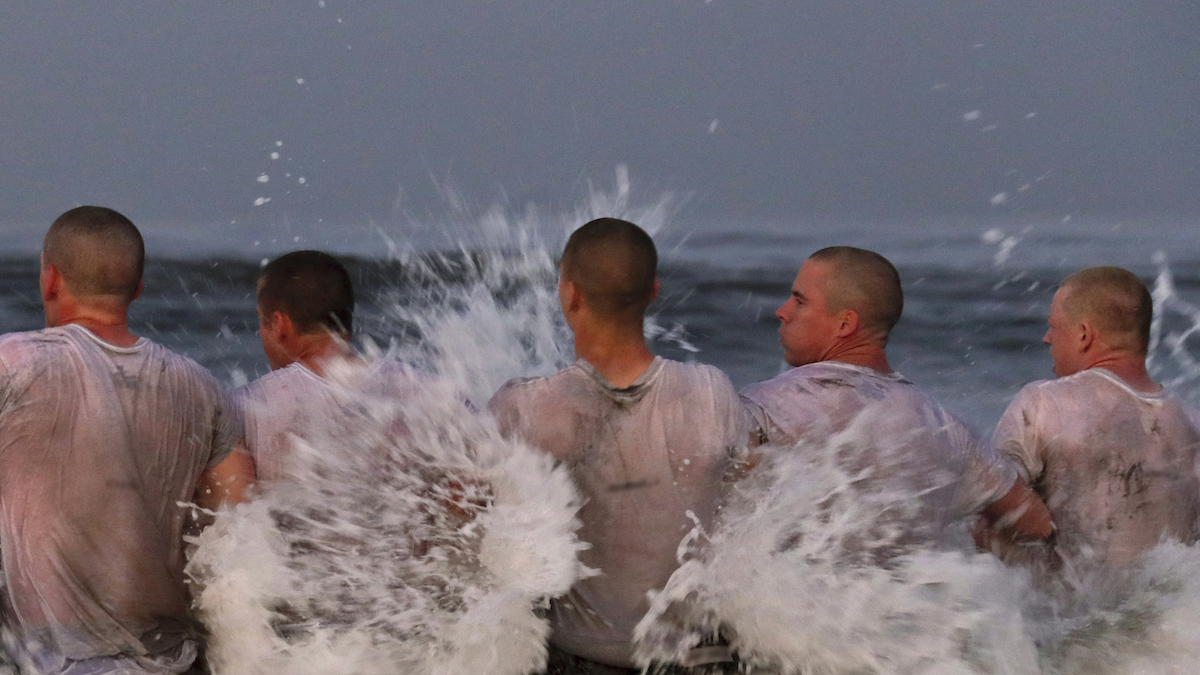
Alaska, Hawaii, Montana and Wyoming are not epicenters of the coronavirus pandemic. Yet these four states scored big this spring when Congress pumped out direct federal aid, while the two hardest-hit states, New York and New Jersey, got comparatively little given the vast numbers of cases and deaths they have seen.
An Associated Press analysis shows that some states with small populations like these took in an out-sized share of the $150 billion in federal money that was designed to address coronavirus-related expenses, when measured by the number of positive tests for the COVID-19 disease.
Their haul ranged from $2 million per positive test in Hawaii to nearly $3.4 million per test in Alaska. In Wyoming, with less than 600 positive cases, the $1.25 billion it received equates to 80 percent of its annual general state budget.
By comparison, New York and New Jersey received about $24,000 and $27,000, respectively, for each positive coronavirus test. Other states with high numbers of cases, including Massachusetts, Michigan and Illinois, received less than $100,000 per case.
We're making it easier for you to find stories that matter with our new newsletter — The 4Front. Sign up here and get news that is important for you to your inbox.
Coronavirus Pandemic Coverage
"If there’s a fire, you don’t spray the whole neighborhood. You spray the house that’s on fire," said Bill Hammond, director of public health policy at the Empire Center for Public Policy, a nonpartisan government watchdog in New York. He said it doesn’t make sense in this case to follow the normal political procedure of giving every state so much in the face of a public health crisis.
To be sure, the lowest population states often receive higher dollar amounts per capita when Congress doles out federal aid. That’s due in part to political reality: Small states have the same number of U.S. senators as more populous ones, and those senators lobby hard for their states’ interests.
The awards in the relief act passed in late March were based on population, but with a catch: Every state was to receive at least $1.25 billion, regardless of its size. Lawmakers said setting such a minimum was needed to reach a deal in a divided government.
In the coronavirus fight, the disproportionate share going to smaller states has consequences. States with high numbers of infections and deaths say they need that money for immediate expenses related to fighting an outbreak that threatened to overwhelm their hospital systems, from staff overtime to setting up makeshift hospitals.
The money for state governments is a slice of a $2.2 trillion federal stimulus. Governments are supposed to use it for new coronavirus expenses incurred from March 1 through Dec. 30. Under federal guidelines, the money cannot be used for other purposes, like making up for lost tax revenue to keep general government services running.
How Coronavirus Has Grown in Each State — in 1 Chart
New York has quickly become the epicenter of the American coronavirus outbreak. This chart shows the cumulative number of cases per state by number of days since the 10th case.
Source: Johns Hopkins University
Credit: Amy O’Kruk/NBC
Some states with relatively few cases have been able to reopen their economies faster and have more options on how to spend the federal largess. Many are now trying to determine how they can spend the windfall while keeping within the federal guidelines.
Wyoming Gov. Mark Gordon, a Republican, is proposing using a portion of the money to help businesses that have suffered because of government-imposed shutdowns and shrunken demand, even though other parts of the federal aid are already aimed at businesses.
Gordon noted neighboring Idaho — which received more than $600,000 per positive test — already has a similar system in place. In a public meeting streamed on video, Gordon said he knew the state would be watched carefully. After all, the state’s allocation is five times per capita what New York received and nearly 90 times as much per positive coronavirus test.
"There will be unduly high scrutiny on how Wyoming uses those funds," Gordon said.
Montana’s governor is also proposing business grants, along with mortgage and rent assistance and other programs.
Hawaii’s Gov. David Ige said his state’s share was "sorely needed" because of the dire financial consequences of halting its tourism industry as the virus spread.
Democratic Sen. Patrick Leahy of Vermont, vice chairman of the Senate Appropriations Committee, has worked for decades to implement all-state minimums for federal funding: "Regardless of total numbers of cases, states like Vermont have had to shut down, just as have other states, and the impact in states small and large has been devastating in many ways," Leahy said in a statement.
Other states are considering dividing the federal money among local governments and businesses, in addition to covering the state’s health expenses. That’s the plan in Alaska. One of that state's two Republican senators, U.S. Sen. Dan Sullivan, said the goal of the act was to get as much help to the states as possible and that he worked hard to set the $1.25 billion minimum level.
"I think the argument that ‘we were hit harder’ is all relative, meaning we’re not out of this pandemic and you’re seeing flareups in other states," he said. "I hope that doesn’t happen in our state, but it could."
West Virginia, which has the seventh-lowest number of U.S. coronavirus cases, received just over $1 million per positive test. Gov. Jim Justice, a Republican, has said he hopes the state will be able to use the money to alleviate its growing budget shortfall, even though federal guidance on the bill suggests that would not be allowed.
New York doesn't have the luxury of trying to use the money to help cover a massive drop in tax revenue.
While it received billions of federal dollars for coronavirus-related expenses, it has received no money to help offset the loss of more than $13 billion in revenue, said Freeman Klopott, spokesman for the state budget division. The state is now considering $10 billion in cuts.
"New York state has been the epicenter of the pandemic and unfortunately has been home to about one-third of all U.S. COVID-19 related deaths, and federal funding provided so far has failed to recognize this reality," Klopott said in a statement.
Steve Sweeney, New Jersey's Democratic state Senate president, said if his state were among those with the fewest infections, "we'd give the money to somebody else."
New York and other states with high numbers of cases have been lobbying Congress to provide more aid to state and local governments in a future coronavirus relief package.
Sens. Bill Cassidy, a Louisiana Republican, and Robert Menendez, a New Jersey Democrat, are proposing $500 billion more for state and local governments. Under their plan, the first one-third of the money would be allocated based on population, the second on the number of coronavirus cases and the third on the toll it’s taken on government budgets.
Under their proposal, every state again would receive at least $1.25 billion — and this time with looser restrictions on how the money could be spent.
Menendez said the baseline amount was a nod to political reality: "We need to get 60 votes in the Senate."
Associated Press reporters Becky Bohrer in Juneau, Alaska; Anthony Izaguirre in Charleston, West Virginia; Audrey McAvoy in Honolulu; Wilson Ring in Montpelier, Vermont; and Marina Villeneuve in Albany, New York, contributed to this report.



